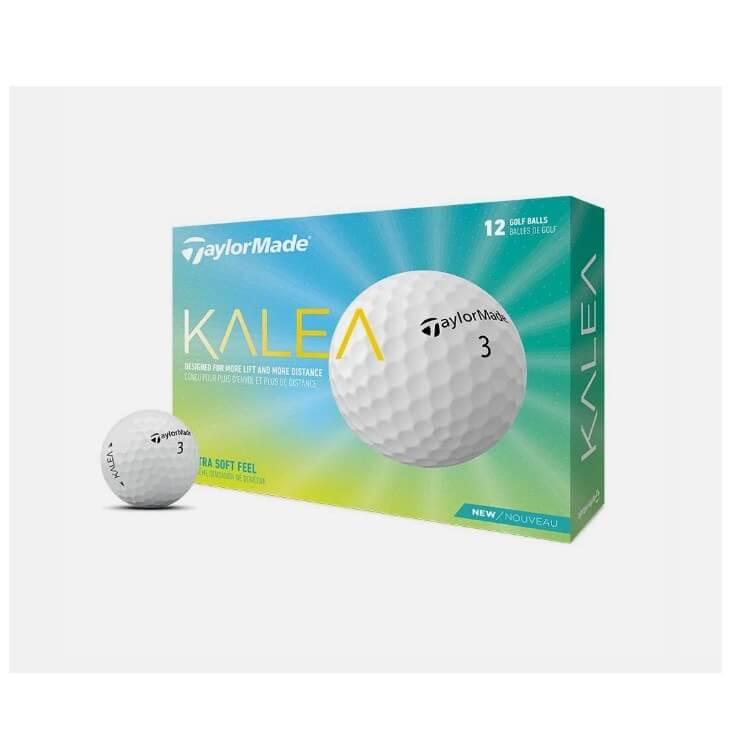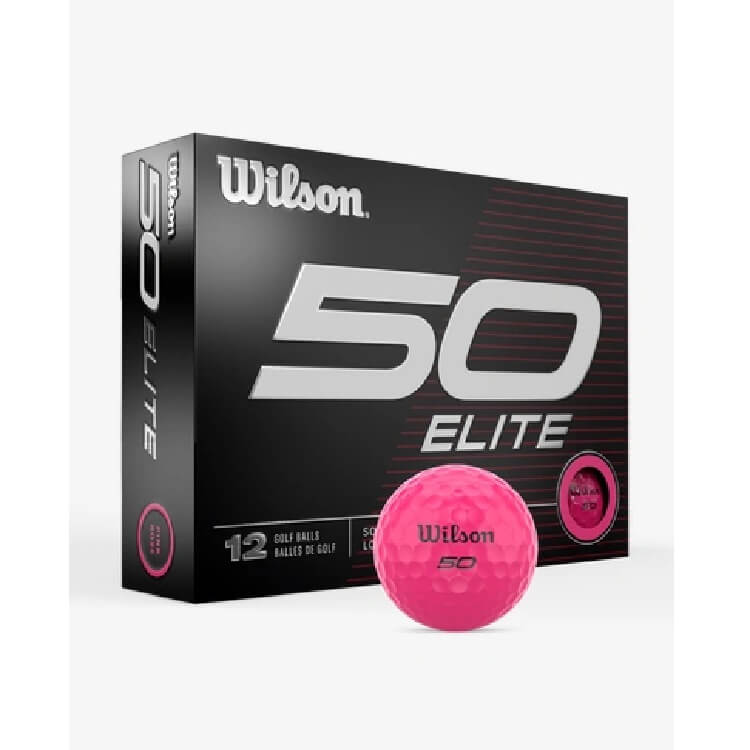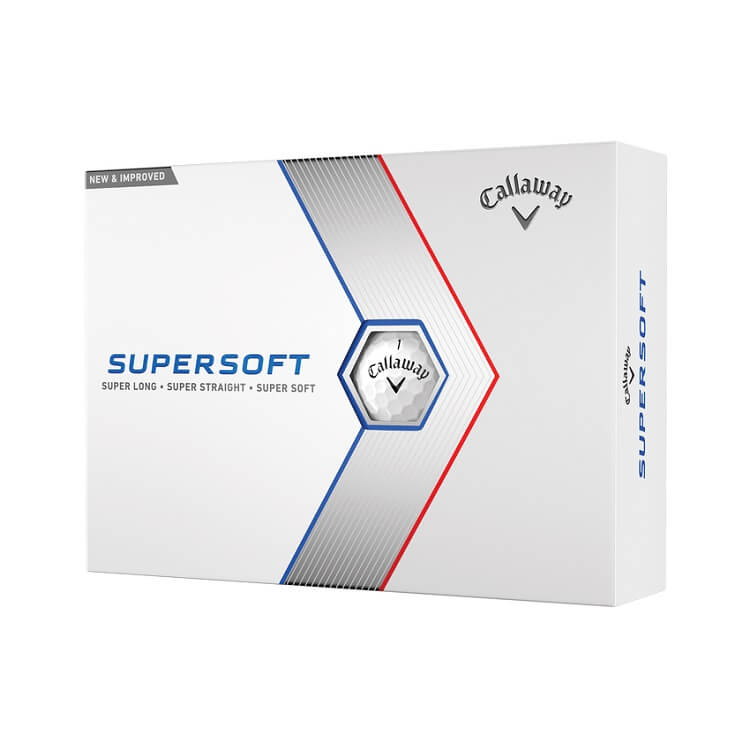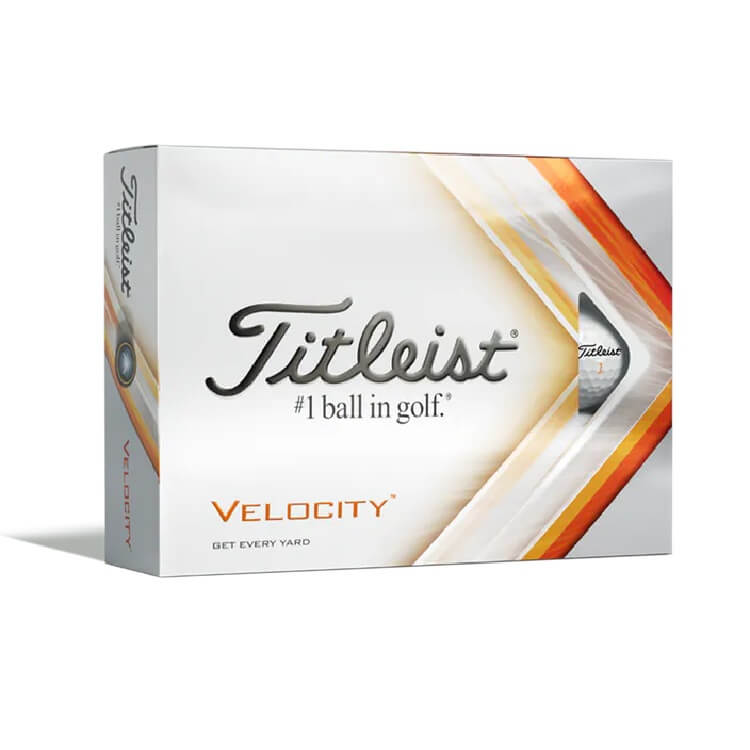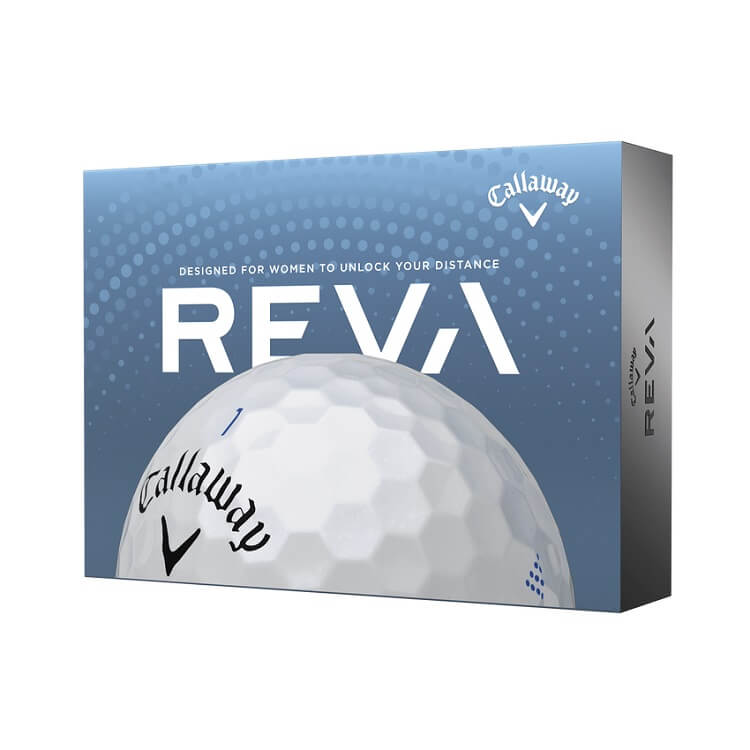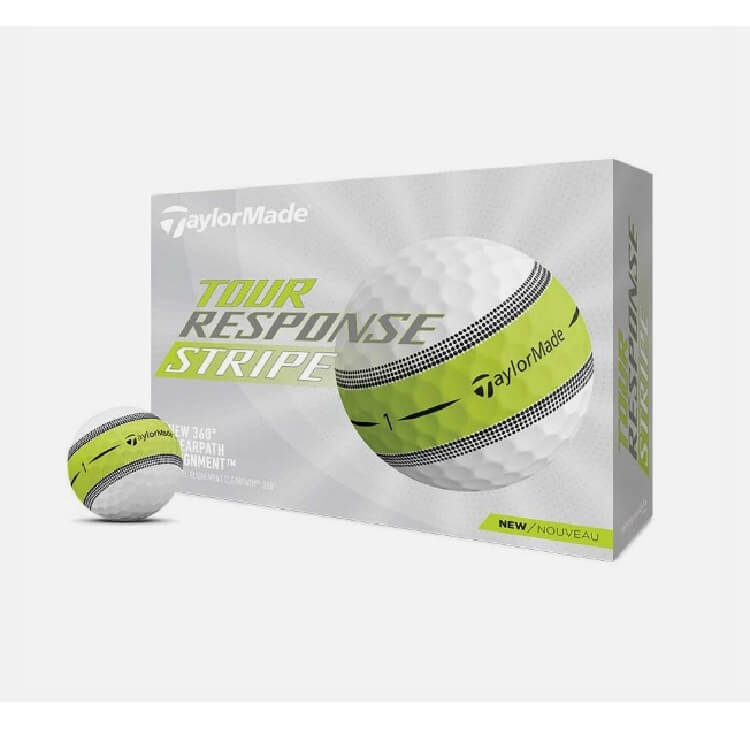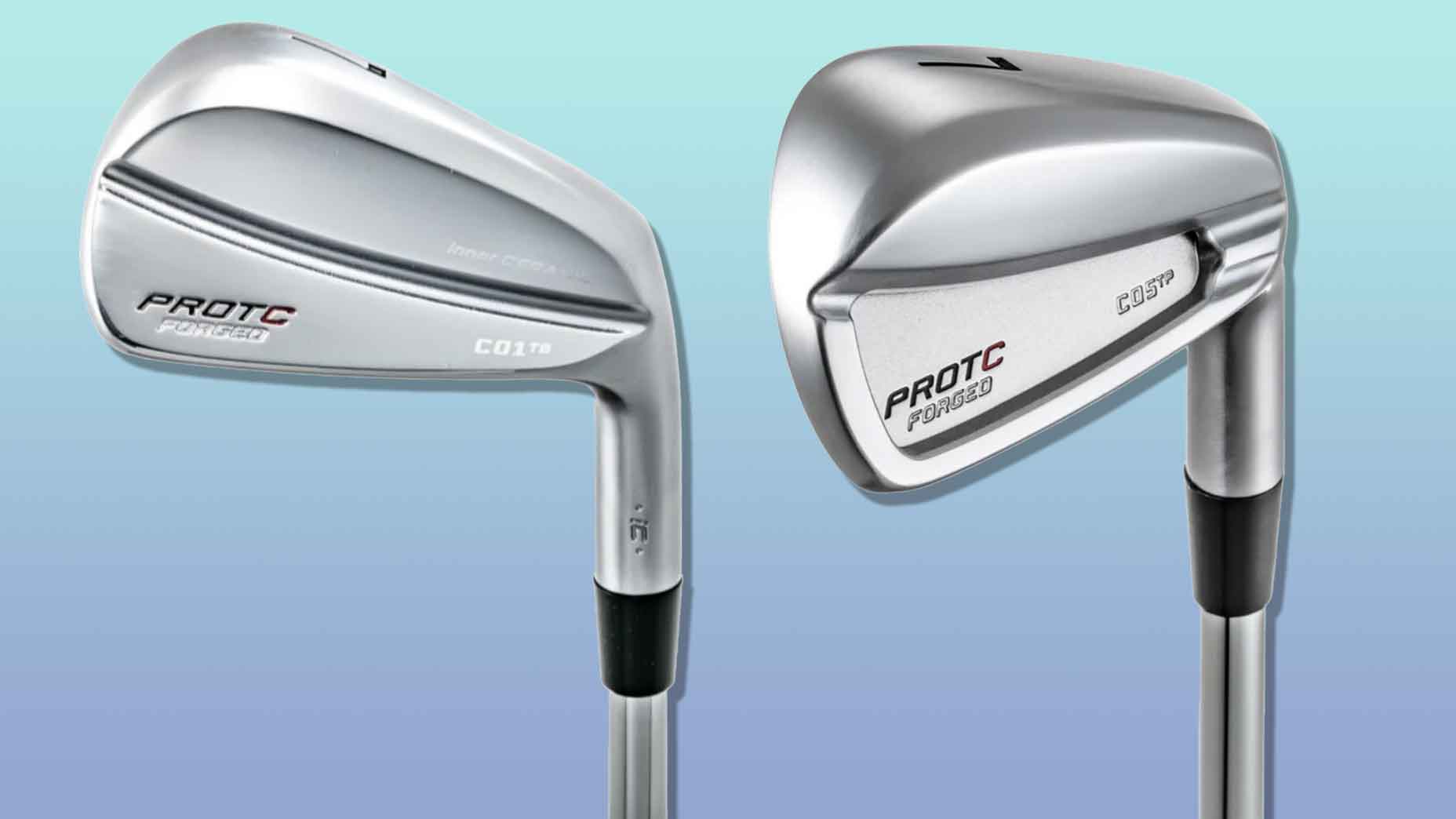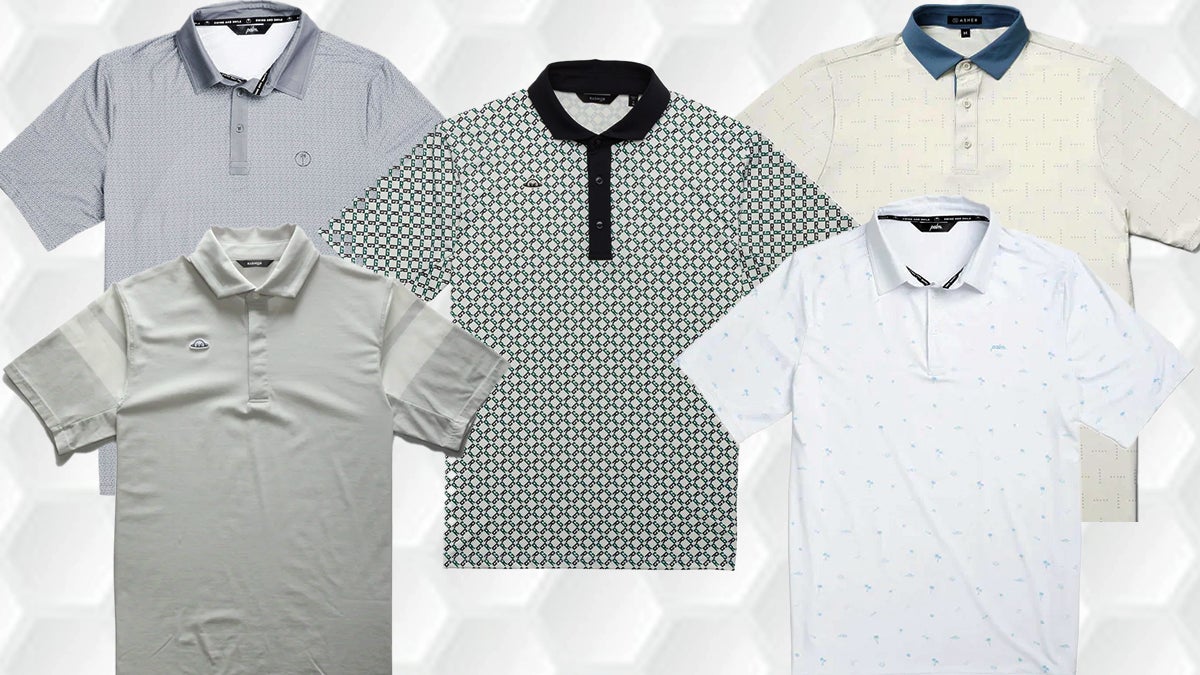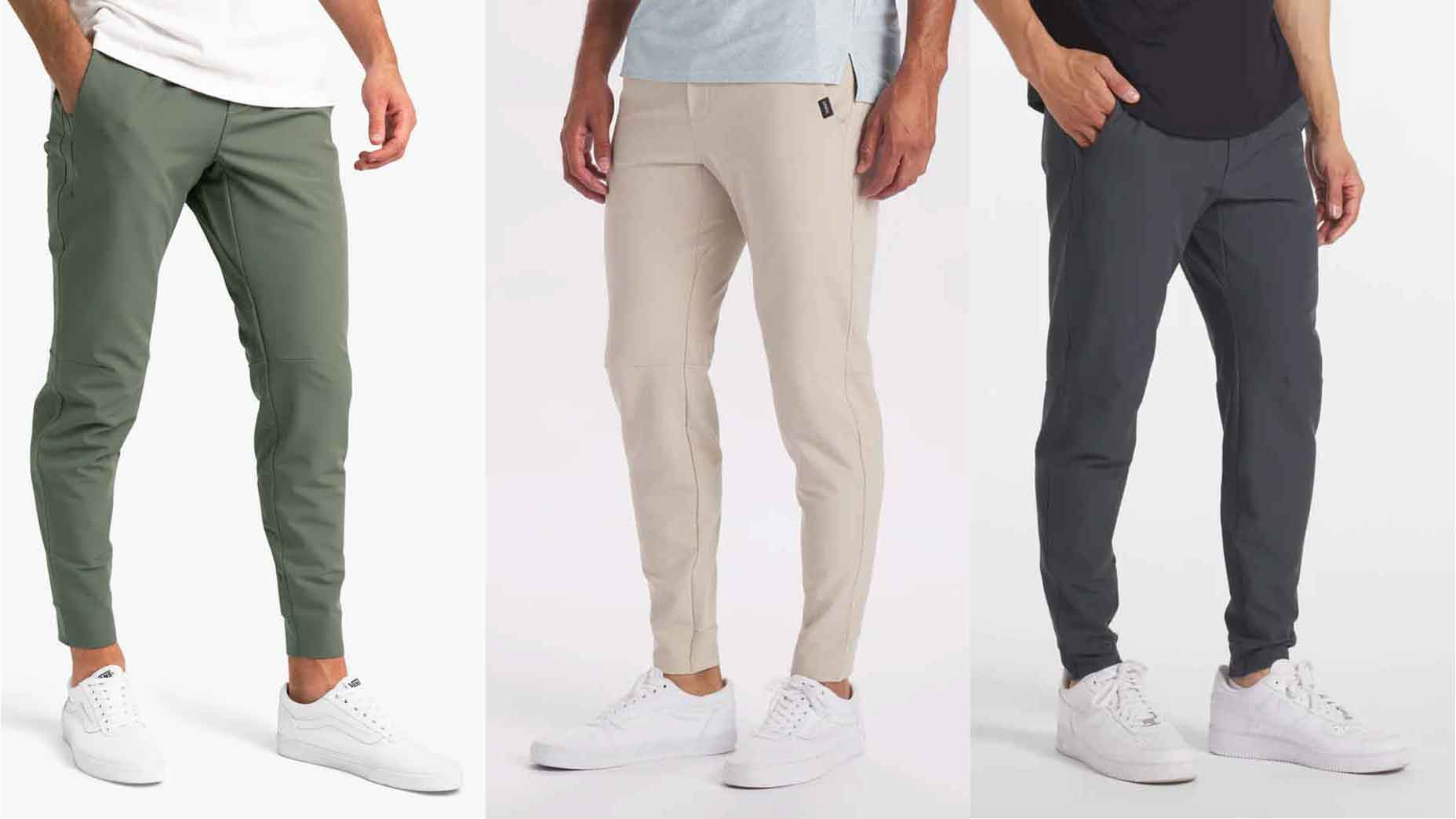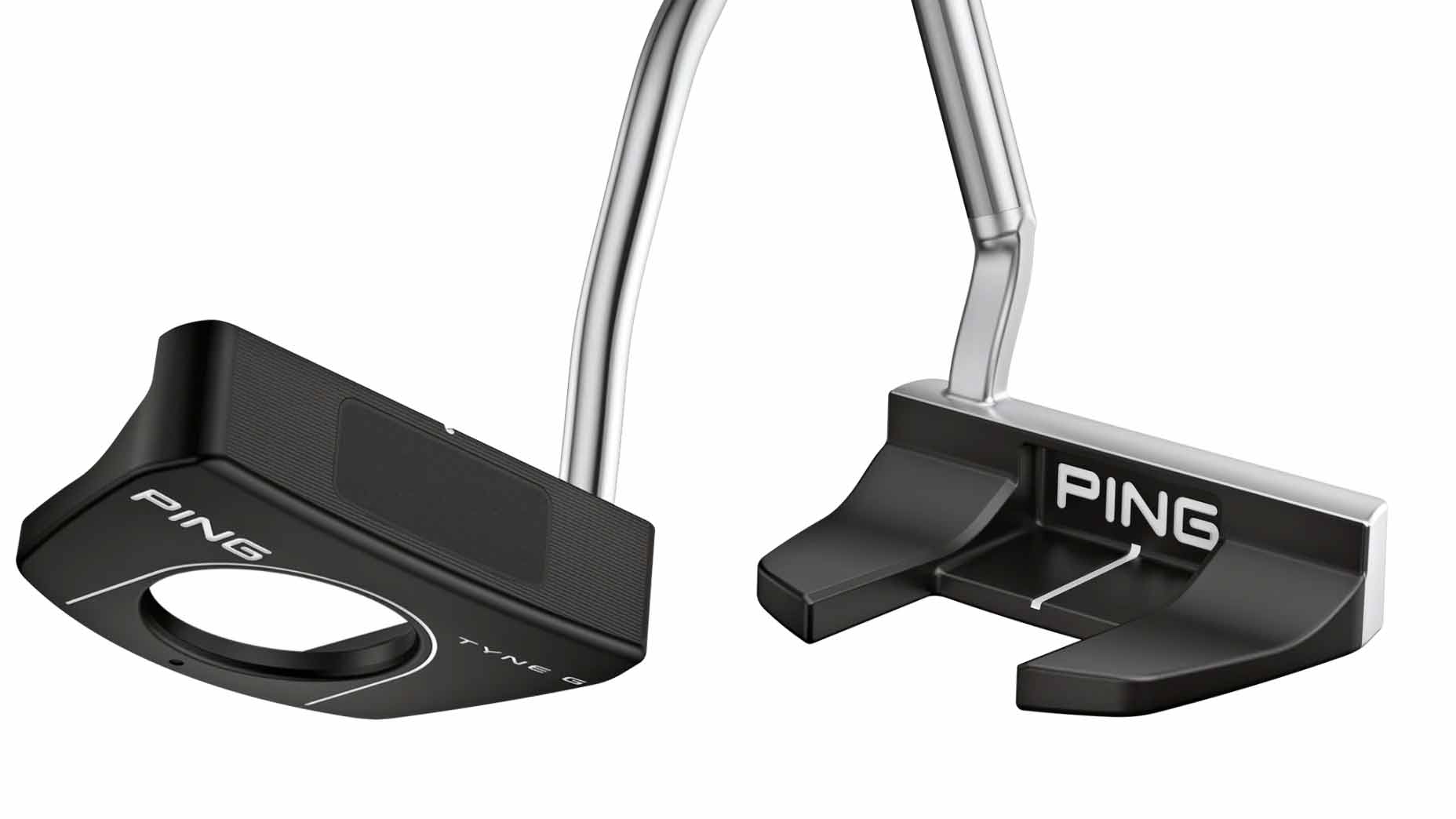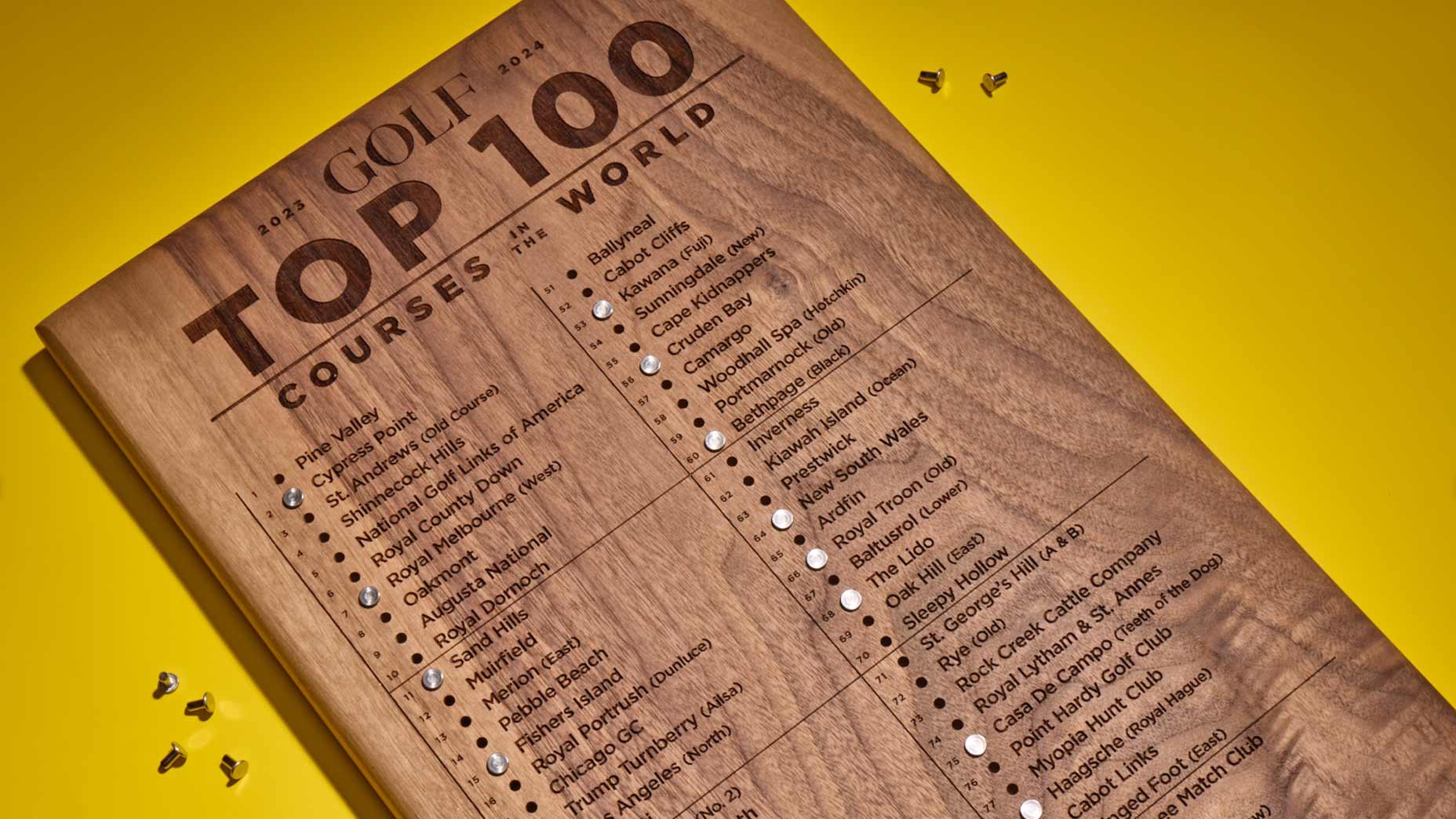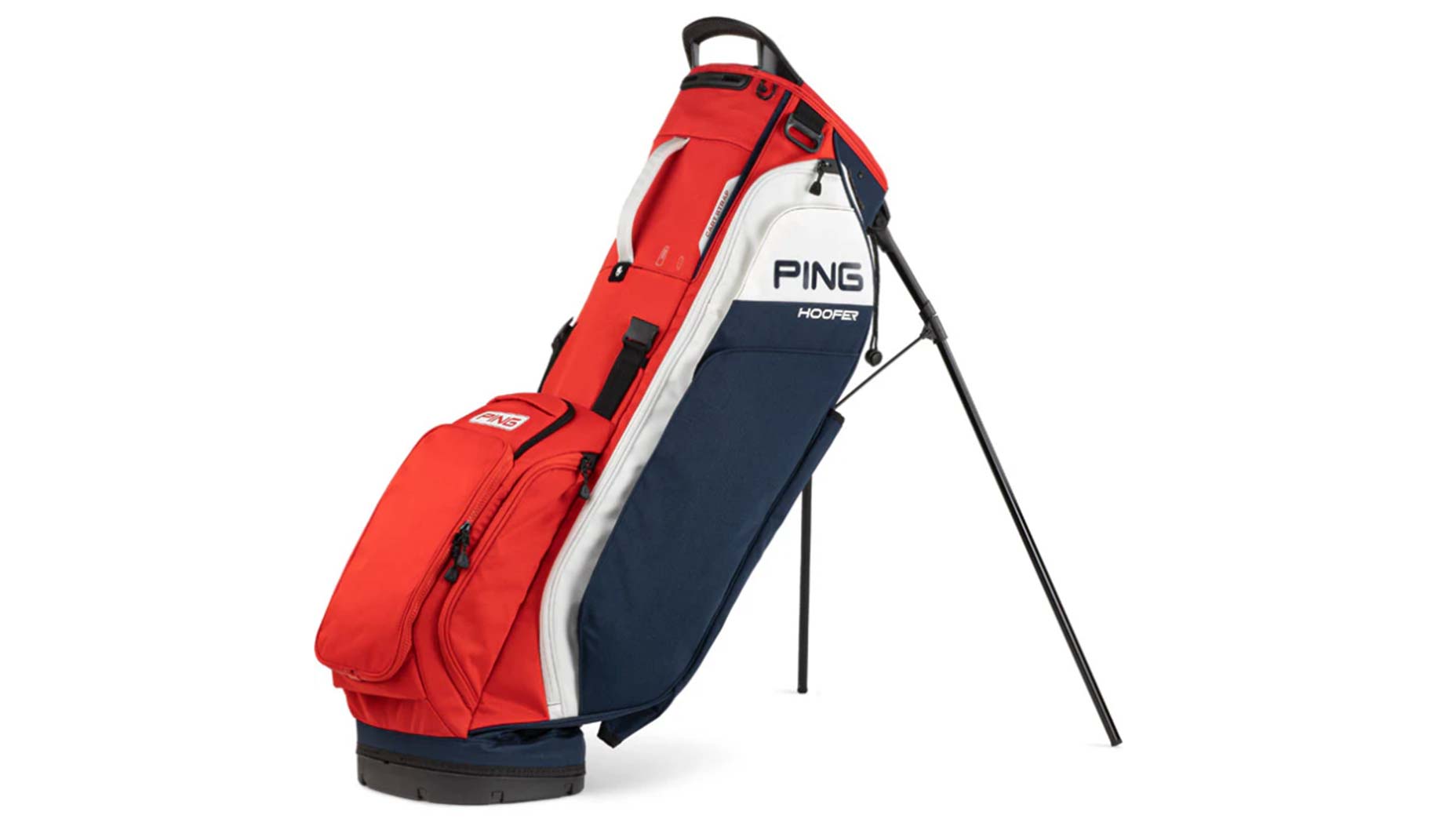Best golf balls for women: performance and style
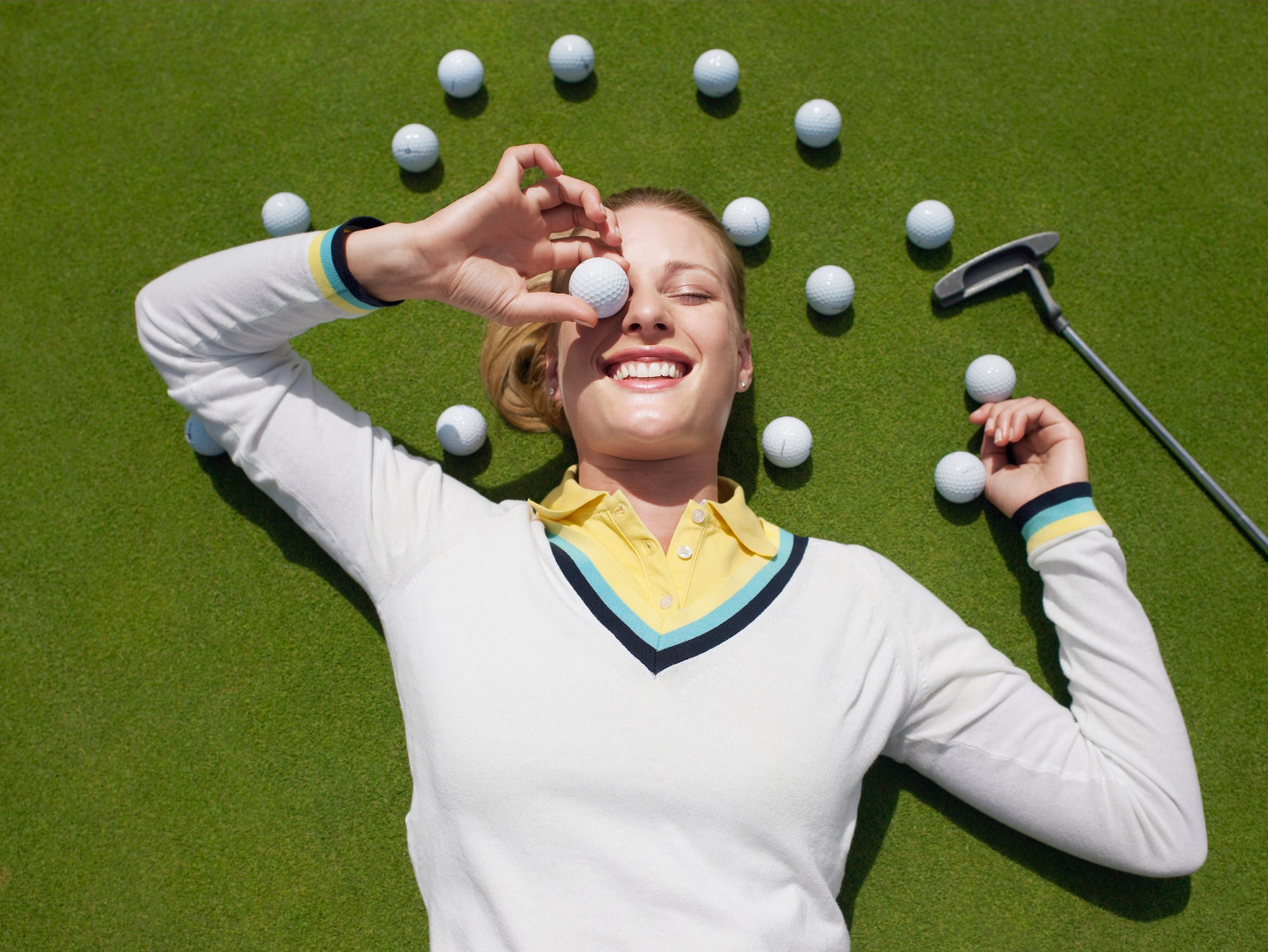
Not all golf balls are created equal. While any two may look the same on the outside, there can be layers of differences on the inside. These layers are also called pieces and range in number (a ball can have as few as one layer or as many as six) and design from one ball to the next. These layers determine a ball’s feel, durability, weight, and performance.
For example, a golf ball with fewer layers will have less spin, a longer distance, a harder feel, and greater durability than a ball with more layers. The trade-off is that balls with fewer layers tend to be less accurate. As you increase the number of layers, you add weight, improve the chances for better spin and accuracy, and soften the ball’s feel while decreasing its durability.
Of course, like every other aspect of the sport, the science behind making golf balls has come a long way in even just the last few years. Many manufacturers today have a solid grasp on the physics that determine golf ball performance — such as weight, number of dimples, and compression — to the point that the best balls on the market are designed with enough precision to cater to particular types of players, including women. Some even have glow-in-the-dark capabilities!
This means the market is flooded with all sorts of golf balls that may look the same but are quite different. Some are designed for those who want distance. Others are made for people who want spin and accuracy. And a ball that plays well for a junior golfer won’t yield the same results for an older person playing golf post-retirement. So, which balls are a good choice for lady golfers? We took a swing at rounding up the best golf balls for women.
Top 10 golf balls for women in 2023
Staff favorite: TaylorMade KALEA Golf Balls
Best runner-up: VICE Tour
Best budget: Wilson 50 Elite Golf Balls
Best for beginners: Bridgestone e6 Lady Precept Golf Ball
Best for slow-to-moderate swing speeds: Srixon Soft Feel Lady Golf Balls
Best for height and low spin: Callaway Supersoft Golf Balls
Best for distance: Titleist Velocity
Best for contact: Callaway REVA Golf Balls
Best visibility: Volvik New VIVID
Best for alignment: TaylorMade Tour Response Stripe Golf Ball
How we chose the best golf balls for women
We researched golf balls manufactured specifically to help female golfers play their best games on the course. To shorten our list, we placed each ball into one of 10 categories. We chose these categories based on the intended purpose of a ball’s design (e.g., anti-slice, distance, accuracy) and other considerations, such as budget, and experience level. We then looked at each ball’s specifications, including construction, cover material, core, and even available colors and combed through detailed product descriptions, ratings, and reviews to find the best women’s golf ball in every category.
Staff favorite: TaylorMade Kalea Golf Balls
Staff favorite: TaylorMade Kalea Golf Balls
Benefits
— Exceptional speed and distance off the tee
— Reliable control and accuracy on the fairway
— Perfect for players with slow swing speeds
Drawbacks
— Some colors may be hard to spot on the course
— Players with faster swing speeds will likely prefer a ball with a higher compression rating
Of all the golf balls we researched, TaylorMade’s Kalea Golf Balls are the most well-rounded of the bunch. The ball is built inside and out to maximize performance for golfers with slower swing speeds as they play through a hole. The patented core technology, two-piece construction, and dimple pattern are designed to add distance and lift to driver shots out of the tee box.
Once the Kalea hits the fairway, its soft and responsive feel — made possible by the ball’s ionomer cover and large core — gives women golfers greater spin and helps them to control their shots with better accuracy.
One drawback is that the purple Kalea (one of three color options available) is often described as hard to find on the course. Aside from that, customers praised Kalea’s added distance, low spin, and higher launch off the tee compared to other balls they’ve tried. They also highlighted the ball’s ability to stick on the green.
Construction: 2 layers | Cover material: Soft ionomer | Core: Synthetic | Compression rating: 60 | Colors: 3
Best runner-up: VICE Tour
Best runner-up: VICE Tour
Benefits
— Adds distance to driver shots
— High level of control for irons and wedges
— Consistently sticks to the green
Drawbacks
— May not be the best option for players with slow swing speeds
— Can feel hard on iron and wedge shots
— Only 1 color option
The VICE Tour golf ball came in a very close second behind our top pick. Like the TaylorMade Kalea, our runner-up is designed to maximize performance from tee box to putting green. The ball’s cover is constructed with a 312-dimple pattern for wind resistance and a stable flight trajectory.
A thin secondary layer reduces driver spin while promoting stability. A core VICE called an “Energy Speed Core” adds to the ball’s overall durability while promoting spin to iron and wedge shots. There’s also an alignment aid for putts.
Third-party lab tests show the VICE Tour outperforming competitors in both driving distance and short-game control. Customers backed up these findings, too, having shared that their driver shots are consistently farther and straighter, and their mid- and short-game shots are more accurate.
However, customers also noted the hard feel of the ball. And while some of our sources said the ball’s compression floats somewhere around 90, VICE doesn’t list an official rating. Given that women, on average, have slower swing speeds than men and typically play better with a soft, low-compression ball, the VICE Tour ball takes second place on this list mainly for its impeccable distance and control — even if women with slow swing speeds may not get the full benefit.
Construction: 3 layers | Cover material: DuPont Surlyn | Core: Synthetic | Compression rating: 90 | Colors: 1
Best budget: Wilson 50 Elite Golf Balls
Best budget: Wilson 50 Elite Golf Balls
Benefits
— Affordable
— Designed for slow swing speeds
— Adds distance and control
Drawbacks
— Likely won’t benefit players with moderate-to-fast swing speeds
Sometimes a golfer just wants a straightforward golf ball that flies straight and keeps them out of the rough. The Wilson 50 Elite Golf Ball lands firmly atop our list as the ball that will consistently perform well without costing a fortune to buy. This ball, named for its compression rating of 50, is designed for players with swing speeds below 90 mph who want to hit longer drives and more accurate mid- to short-range shots.
The 302-dimple pattern on the Elite’s cover features flat and shallow dimples to help the ball cut wind-resistance and create a low spin on driver shots. Meanwhile, the ball’s rubber core pulls double duty, adding more distance off the tee and greenside spin with irons and wedges. Customers noted good yardage with their drivers and a soft, responsive feel on fairway shots.
Construction: 2 layers | Cover material: Ionomer | Core: Rubber | Compression rating: 50 | Colors: 5
Best for beginners: Bridgestone Golf e6 Lady Precept Golf Ball
Best for beginners: Bridgestone Golf e6 Lady Precept Golf Ball
Benefits
— Ideal for new golfers
— Optimizes distance and minimizes spin
— Affordable
Drawbacks
— Advanced players won’t benefit from the ball’s low compression rating
For beginner golfers looking for a ball that delivers as much distance and control as possible while they develop their form, the Bridgestone Golf e6 Lady Precept Golf Ball fits that description to a tee. The ball touts a compression rating of 40, which makes it a very soft ball ideal for golfers taking the mechanics of their swing nice and easy on every shot.
The Lady Precept’s two-piece construction consists of the soft core, which lends greater control and reduced vibration at impact, and a gradational compression between layers that translates slow-but-solid swings into maximized yardage. This design helps lady golfers new to the sport think through the phases of their swing without feeling pressured to power through as quickly as possible to achieve a good distance.
Players loved the longer drives and straighter shots they saw on the course. Intermediate and expert players with faster swings won’t reap the same benefits as beginners when using the Lady Precept. However, it’s the top contender for any female golfer still trying to find her rhythm.
Construction: 2 layers | Cover material: Plastic | Core: Rubber | Compression rating: 40 | Colors: 2
Best for slow-to-moderate swing speeds: Srixon Soft Feel Lady Golf Balls
Best for slow-to-moderate swing speeds: Srixon Soft Feel Lady Golf Balls
Benefits
— Ideal for players with swings that are either slow or gradually increasing in speed
— Thin cover maximizes speed and launch height
Drawbacks
— Not the most durable
Many golfers develop faster swings as they transition from beginners to more experienced players. With its compression rating of 58 and aerodynamic design, the Srixon Soft Feel Lady Golf Balls are our top pick for getting the best performance out of swing speeds that fall somewhere between slow to moderate.
This ball sports 338 dimples that cut through even heavy winds to achieve long distances. Its soft core, which Srixon says was designed to complement a woman’s swing, graduates in firmness as it progresses toward the ionomer cover to provide a soft feel while maximizing ball speed and launch heights.
And for fairway shots, the Soft Feel’s cover is thin and — in keeping with the ball’s name — very soft, as noted by customers. Some reviews mentioned that the ball’s thin cover is prone to breaking. Still, many customers contributed their longer and straighter shots to the ball’s soft compression.
Construction: 2 layers | Cover material: Ionomer | Core: Synthetic | Compression rating: 58 | Colors: 2
Best for height and low spin: Callaway Supersoft Golf Balls
Best for height and low spin: Callaway Supersoft Golf Balls
Benefits
— Maximizes launch height and minimizes spin
— A compression rating of 38
— Several color options
Drawbacks
— Players with fast swing speeds will likely lose distance on their shots
— The design sacrifices some level of control in mid to short game
Callaway Supersoft Golf Balls are designed for slow-swing golfers who want pure, straight distances with virtually no spin. Boasting the second lowest compression rating on our list, the Supersoft features a proprietary elastic rubber core that delivers a soft feel and helps players hit faster ball speeds.
The cover is a hybrid construction that lends control with wedge shots but make no mistake about it: Thanks to its layered design and aerodynamic hex dimple pattern, this ball is all about driving shots straight down the fairway.
Customers described their shots with Supersoft as straight and long. Many customers also noted the higher trajectory. If there was a sticking point to be found, it was that some customers noticed the ball’s lack of spin down the stretch caused them to either overshoot a few greens or not give the ball enough stopping power when closing in for the putt.
Construction: 2 layers | Cover material: Hybrid | Core: Rubber | Compression rating: 38 | Colors: 6
Best for distance: Titleist Velocity
Best for distance: Titleist Velocity
Benefits
— Exceptional distance with drivers and woods
— Great trajectories and launch angles
Drawbacks
— Lacks spin needed for controlled iron and wedge shots
— Scuffs easily
With a core and outer layer built for speed and a pattern of 350 octahedral dimples for high trajectory, the Titleist Velocity golf ball is designed to go the distance. Of course, like any ball designed for speed, trajectory, and distance, the Velocity carries low spin, and that means not-so-great control from the fairway.
Sources online have claimed the Velocity has a compression rating of 65. However, customers with swing speeds above 90 mph reported greater driving distances when using the Velocity, suggesting this ball will help players of all swing speeds add extra yards off the tee.
Construction: 2 layers | Cover material: Plastic | Core: Synthetic | Compression rating: 65 | Colors: 4 + a customization option
Best for easy contact: Callaway REVA Golf Balls
Best for easy contact: Callaway REVA Golf Balls
Benefits
— 9% larger than a standard-sized golf ball
— Excellent shot distance and trajectory
— Still conforms to USGA rules, despite size
Drawbacks
— Low-spin design reduces control in the short game
The standard-sized golf ball has a diameter of 1.68 inches, and the Callaway REVA Women’s Golf Ball comes in at 1.73 inches. That’s a 9% increase in size, which means better odds of solid contact. And with solid contact comes greater chances of launch.
The ball’s larger-than-normal size also makes room for its larger-than-average core. The core’s size and compression rating of 30 (noted by several sources but unconfirmed by Callaway) work to create a forgiving ball that can easily stretch down the fairway.
Customers loved the longer, straighter shots they saw on the course. Some even noted they gained up to 20 yards from their drives. For lady golfers looking for a ball they can swing at with confidence, the Callaway REVA is one to check out.
Construction: 2 layers | Cover material: Ionomer | Core: Rubber | Compression rating: 30 (unconfirmed) | Colors: 2
Best visibility: Volvik New VIVID
Best visibility: Volvik New VIVID
Benefits
— Vibrant colors increase visibility
— Available in an assortment of colors
Drawbacks
— May not be soft enough for beginners or players with slow swing speeds
The Volvik New VIVID was designed to help golfers (ladies and lads alike!) with less-than-stellar vision. It sports a patented matte finish and comes in a variety of vibrant colors, available in assorted- or single-color packs of 12. Customers who struggle to follow their ball through the air or track it on the ground noted how easy it is to spot these balls from just about anywhere.
The ball’s compression rating is 75, so potential buyers should consider that the New VIVID will have a harder feel on impact and less distance off the tee than a softer option. This is a unisex ball, so it’s not optimized to bring out a woman golfer’s best performance the way many of the others on this list are designed to do. Of course, the higher compression rating does mean greater greenside spin and more control on the fairway.
Construction: 3 layers | Cover material: Ionomer | Core: Synthetic | Compression rating: 75 | Colors: 6
Best alignment: TaylorMade Tour Response Stripe Golf Balls
Best alignment: TaylorMade Tour Response Stripe Golf Balls
Benefits
— Highly visible 360-degree alignment stripe
— Compression rating suitable for slow swing speeds
— Designed for maximum greenside spin
Drawbacks
— Pricey
Not only do the TaylorMade Tour Response Stripe Golf Balls make putting easy with a 360-degree alignment stripe, but they’re also all-around great balls for female golfers. Its compression rating of 40 helps players with slow swing speeds achieve greater distance from the tee, while its cover is designed for more controlled wedge shots onto the green. That’s because the cover’s urethane material effectively counteracts the loss of spin and accuracy in short-game shots that typically result from balls with low compression ratings.
And when it’s time to break out the putter, the alignment stripe keeps the aim true and provides immediate feedback on the roll. Customers shared that the TaylorMade Tour Response Stripe ball did indeed improve their putting. A few people felt the Tour Response was a touch on the expensive side, but they still said the ball helped them shoot farther, land on the green with greater control, and putt with better precision.
Construction: 3 layers | Cover material: Urethane | Core: Rubber | Compression rating: 40 | Colors: 4
Walk onto the course with confidence
Now it’s time to figure out which golf balls listed above are for you. So, that means you should consider your own needs as a golfer as well as your personal preferences. For example, players with a slow swing speed would benefit from a ball with a low compression rating (i.e., has a soft feel). The Callaway Supersoft Golf Balls would fill this need quite well and help tag extra yards to your drive. The color variety isn’t important when it comes to playing your best, but there’s something to be said for showing a bit of personality when squaring off with a competitor. If you want to add some color to your game, the Volvik New VIVID golf ball will certainly deliver.
How to pick the right women’s golf balls for you
Keep these factors in mind when shopping for a women’s golf ball. If you do, you’ll increase your chances of picking a ball that delivers the biggest bang for your buck.
Low vs. high compression
As mentioned several times throughout this article, compression rating is all about the “soft” or “hard” feel of a ball. A ball with low compression typically has a compression rating of 70 or lower. Anything above that number is a high compression rating. If you struggle to get distance off the tee box or even in the fairway, you’ll want to prioritize a ball with a low compression rating.
Low-compression balls are also recommended for players with slow swing speeds because they compress at lower speeds, meaning they translate more of that energy into distance. On the other hand, players with fast swing speeds benefit from high-compression balls because these require more speed to compress. If a player with a fast swing uses a ball that’s too soft, a lot of that energy that would translate into distance is lost.
Cover material
A ball cover (the outermost layer) is typically constructed from one of two materials: ionomer or urethane. Ionomer covers tend to be more durable than urethane covers and yield less spin. They also tend to help achieve better distance. That’s why many of the balls on this list that are designed for distance have an ionomer cover. On the flip side, urethane covers offer more spin for better control when using irons and wedges.
Dimples
Every golf ball in this article has somewhere between 300 to 400 dimples. Dimples are used to promote launch and cut through any wind resistance. In other words, they make the ball aerodynamic. Golf ball manufacturers create all sorts of unique dimple patterns that vary wildly in the number, shape, and size of dimples on any given ball. Honestly, short of having a wind tunnel in a lab setting to test the aerodynamic performance of a ball, we can only go off what the manufacturers claim their dimple patterns are designed to do (along with reviews from actual customers, of course). When reading about a ball’s dimple pattern, just ensure the claimed advantages align with your needs and preferences.
FAQ
Is there a difference in women’s golf balls?
Yes. Overall, women’s golf balls are made with softer cores (low compression ratings) to help them achieve greater distances. On average, women have slower swing speeds and less upper body strength compared to men. The soft cores allow for greater compression at low swing speeds, meaning the ball can translate more of the swing’s energy into distance.
What golf balls do female pros use?
Almost half of the top 50 players in the LPGA use the Titleist Pro V1. If this tempts you into rushing out and stocking up on Pro V1s, just remember this: Professional golfers are professionals for a reason. They have faster-than-average swing speeds and exert the kind of power that requires a high compression ball for maximized distance. The Pro V1 and many other balls used by the pros are designed for experienced, if not elite, players. Still, note that some professional players will opt for softer balls because they like the improved spin and control they provide.
What type of golf ball is the most forgiving?
A forgiving golf ball generally has a low compression rating because it helps people with slow swing speeds achieve the best possible distance from their shots. Softer balls also won’t lose as much speed if you miss the center of the clubface on contact.

